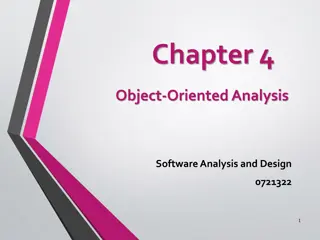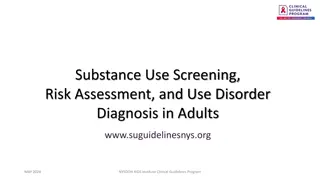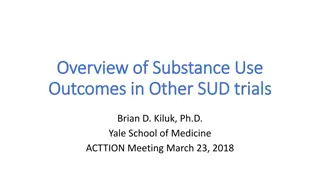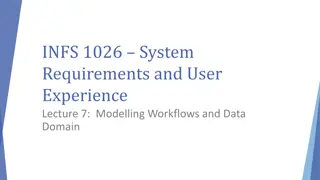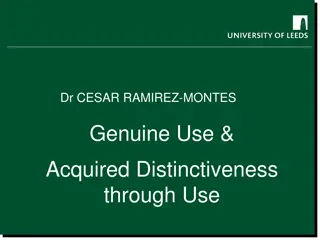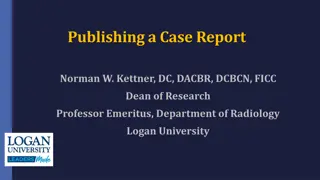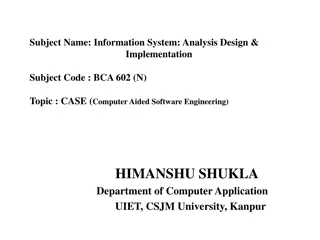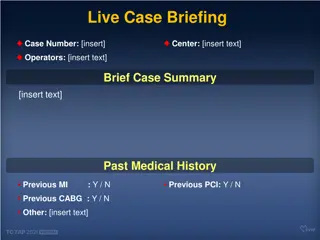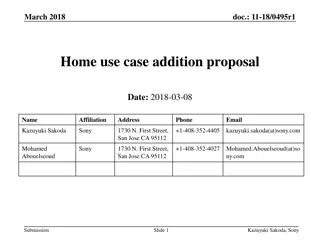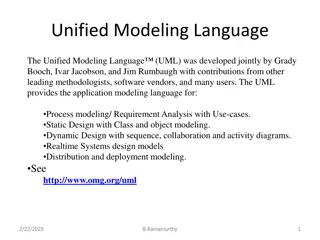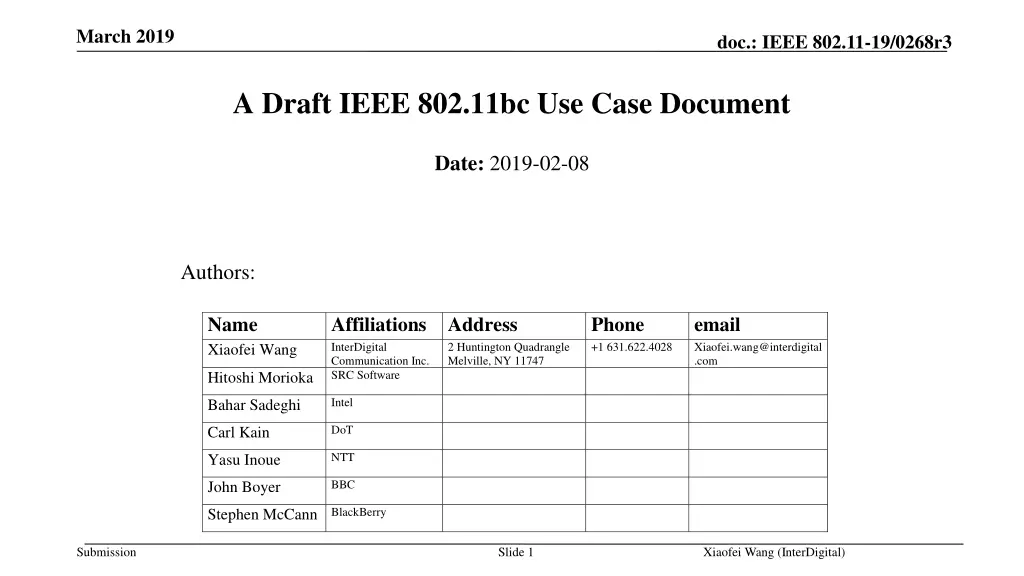
IEEE 802.11bc Use Cases for Enhanced Broadcast Services
Explore use cases proposed for IEEE 802.11bc TG including stadium video distribution, low power sensor UL broadcast, and intelligent transportation broadcast. Discover benefits and stakeholders involved in implementing these innovative solutions.
Download Presentation

Please find below an Image/Link to download the presentation.
The content on the website is provided AS IS for your information and personal use only. It may not be sold, licensed, or shared on other websites without obtaining consent from the author. If you encounter any issues during the download, it is possible that the publisher has removed the file from their server.
You are allowed to download the files provided on this website for personal or commercial use, subject to the condition that they are used lawfully. All files are the property of their respective owners.
The content on the website is provided AS IS for your information and personal use only. It may not be sold, licensed, or shared on other websites without obtaining consent from the author.
E N D
Presentation Transcript
March 2019 doc.: IEEE 802.11-19/0268r3 A Draft IEEE 802.11bc Use Case Document Date: 2019-02-08 Authors: Name Xiaofei Wang Affiliations Address InterDigital Communication Inc. SRC Software Phone +1 631.622.4028 email Xiaofei.wang@interdigital .com 2 Huntington Quadrangle Melville, NY 11747 Hitoshi Morioka Intel Bahar Sadeghi DoT Carl Kain NTT Yasu Inoue BBC John Boyer Stephen McCann BlackBerry Submission Slide 1 Xiaofei Wang (InterDigital)
March 2019 doc.: IEEE 802.11-19/0268r3 Abstract This document contains the proposed use cases descriptions for the IEEE 802.11bc TG. Submission Slide 2 Xiaofei Wang (InterDigital)
March 2019 doc.: IEEE 802.11-19/0268r3 Use Case 1: Stadium Video Distribution Stakeholders Topology/Architecture Stadium system operators Stadium audience, coaches and referees Contents Server Broadcasters, e.g., Live TV Network Manufactures of semiconductor, networking and mobile devices Service scene AP An eBCS AP provides eBCS for videos to a large number of densely located STAs, which may be mobile devices. An eBCS AP provides multiple eBCSs for multiple video streams, e.g.: live video feed/Video Highlights Replay Videos from different angles of the game (e.g., in soccer) STA STA STA STA STA Videos of different sport activities that take place in parallel (e.g., athletics) Expected Benefits: Required function Providing enhanced Broadcast Services (eBCS) for videos to a large number of densely located STAs. These STAs may be associated, or unassociated with the AP or may be low-cost STAs that do not transmit. Ability to broadcast simultaneous information to a large number of users Reuse existing technology while reducing cost and implementation complexity Submission Slide 3 Xiaofei WANG (InterDigital))
March 2019 doc.: IEEE 802.11-19/0268r3 Use Case 2: Low Power Sensor UL Broadcast Topology/Architecture Stakeholders Users of IoT devices IoT System Operators Manufactures of semiconductor, APs, networking and mobile devices STA 1 AP 1 Internet Server Service scene AP 2 An eBCS AP provides forwarding service for eBCS non-AP STAs that are not associated with itself to end-servers Zero Setup Sensor STA 2 eBCS STAs have pre-configured keys to enable secure message delivery STA 1 @ t=T1 AP 1 Internet Server eBCS non-AP STAs are expected to generate low rate data: e.g., 100bps short burst once a day Sensor on the move eBCS APs may enforce service policy STA 1 @ t=T2 AP 2 Required function Expected Benefits: Pre-configured IoT devices automatically connect to the end server through eBCS APs with zero setup action required Ability to broadcast information destined to the end server Ability to reduce cost and implementation complexity Low power IoT devices in mobility report to their servers through eBCS APs without scanning and association Ability to enable low power sensor STA operations Submission Slide 4 Xiaofei Wang (InterDigital)
March 2019 doc.: IEEE 802.11-19/0268r3 Use Case 3: Intelligent Transportation Broadcast Topology/Architecture Stakeholders Connected Vehicle Users of railway crossing and intelligent transportation system (ITS) Railway operators, automobile manufacturers Connected Vehicle Roadside Equipment Government agencies and police Manufactures of semiconductor, automobiles, networking and mobile devices Personal Info Device Service scene Adv. Railroad Crossing For advanced railroad crossing: Connected Vehicle RSE provides eBCS service of arriving train info and railroad crossing warning Connected Vehicle Roadside Equipment PID and OBE provide eBCS service for personal and vehicle location info For traveler information broadcast: Personal Info Device Traveler Info Broadcast RSE provides eBCS service of local traveler info, e.g., Expected Benefits: Required function Connected Vehicle Roadside Equipment (RSE), Connected Vehicle (OBE) and Personal Informational Device (PID) provide eBCS service for safety related information for railway crossing Ability to broadcast safety related information and local traveler information without delay and association to large number of STAs Ability to reduce cost and implementation complexity RSE provides eBCS service for local traveler information Submission Slide 5 Xiaofei Wang (InterDigital)
March 2019 doc.: IEEE 802.11-19/0268r3 Use Case 4: Broadcast Services for Event Production Stakeholders Topology/Architecture Server Event (e.g., music festival, Comic-Con) system operators Video Encoder Event directors, producers and staff Cameras Event attendees Network Manufactures of semiconductor, networking and mobile devices Audio Encoder Production Talkback Service scene At large events, e.g., music festival and Comic-Con, eBCS services may be provided concurrently for multiple data streams suitable for different groups of customer STAs: Live audio/video feeds for multiple stages for event attendees, directors, dressing rooms, safety advisors AP Training videos for event staffs STA STA STA STA STA Introduction videos for event attendees waiting in line Expected Benefits: Required function Ability to broadcast simultaneous information suitable for different groups of customer STAs, of which some group may contain a large number of users Providing enhanced Broadcast Services (eBCS) for multiple data streams suitable for different customer STAs. The number of STAs may be large and these STAs may be static or mobile. Reducing cost and implementation complexity for event producers and system operators as well as safety officials Submission Slide 6 Xiaofei WANG (InterDigital))
March 2019 doc.: IEEE 802.11-19/0268r3 Use Case 5: Multi-lingual and Emergency Broadcast Stakeholders Topology/Architecture Venue (e.g., museum, conference) system operators Emergency Management Agencies/local governments Contents Server general public Network Venue users (e.g., visitors or attendees) Manufactures of semiconductor, networking and mobile devices AP Service scene An eBCS AP provides eBCS for multiple sources of information, e.g., emergency information, venue information, translation in a conference, to a large number of densely located STAs, which may be static or mobile devices. An eBCS AP provides multiple eBCSs for the same information in different languages STA STA STA STA STA Expected Benefits: Required function Ability to broadcast simultaneous information to a large number of users Providing enhanced Broadcast Services (eBCS) for emergency and/or Multi-lingual service to a large number of densely located STAs. These STAs may be associated, or unassociated with the AP or may be low-cost STAs that do not transmit. These STAs may be static or mobile. Reducing cost and implementation complexity for venue and emergency system operators Submission Slide 7 Xiaofei WANG (InterDigital))
March 2019 doc.: IEEE 802.11-19/0268r3 References [1] IEEE 11-19/0182r0, Template for TGbc Use Case Scenario slides, Jan. 2019 [2] IEEE 802.11-18/383r0, BCS Use Cases, Mar. 2018 [3] IEEE 802.11-18/0532r0, Low Power Sensor Broadcast Use Cases, Mar. 2018 [4] IEEE 802.11-18/1592r0, Possible Enhancement for Broadcast Services over WLAN, Sept. 2018 [5] IEEE 802.11-18/0561r0, Some Use Cases for Broadcast Services over WLAN, Mar. 2018 [6] IEEE 802.11-18/0771r0, Potential ITS Use Cases for BCS, Apr. 2018 [7] IEEE 802.11-18/1437r1, Broadcast Use Case from Event Producers, Sept. 2018 Submission Slide 8 Xiaofei Wang (InterDigital)

